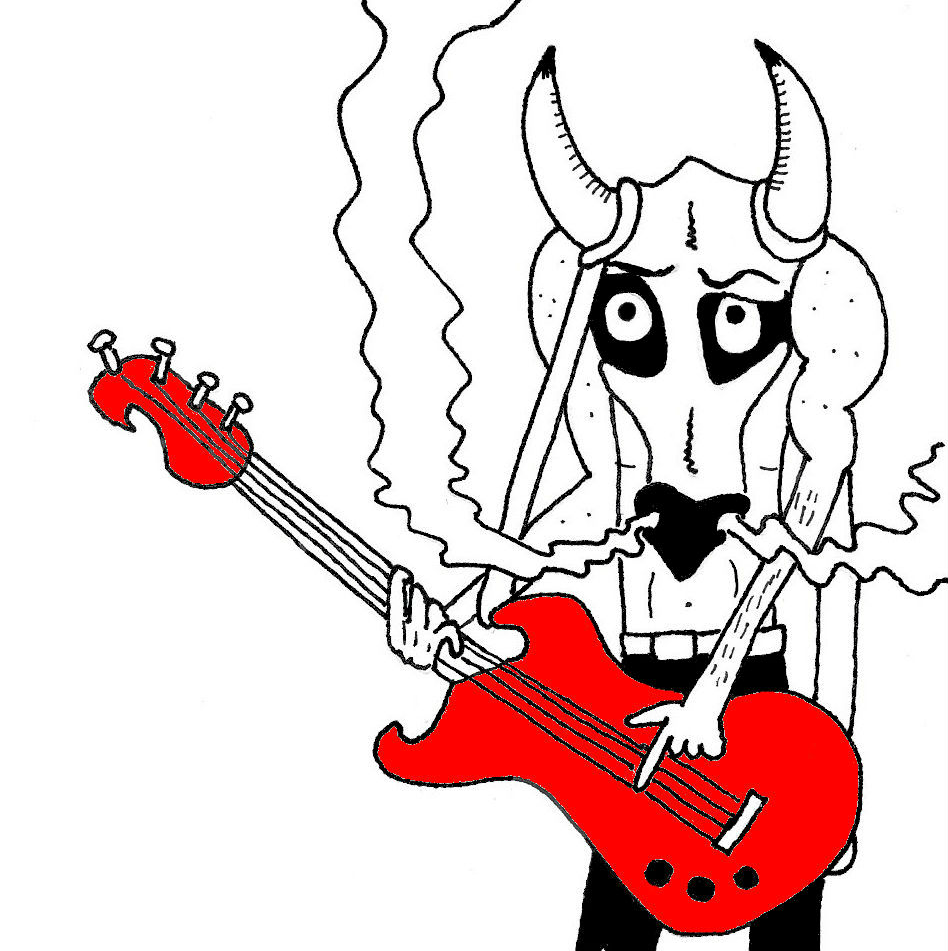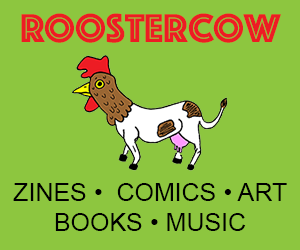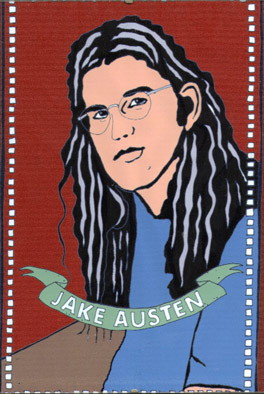
Interview with the creator of Roctober Zine Jake Austen
Jake Austen has his hands in many pots. He also wears many hats and is perhaps a renaissance man—if the Renaissance was understood to include comics, punk rock, puppets, dancing, and paying homage to late, great, and sometimes forgotten luminary figures of this nation’s colorful musical past. Jake started his long-running Roctober zine in 1992 and has never looked back. Actually, he may very well have looked back and why not? What’s wrong with looking back? In fact, that’s kinda the point of this interview, so let’s get to it. — Chris Auman, 2011
You’re sneaking up on twenty years of Roctober, any special plans to commemorate this amazing feat of accomplishment?
We are going to start a little early, in Fall 2011, with a book of our best interviews coming out from Duke University Press, plus our 50th issue. I may also do a record and another book in Fall of 2012. And hopefully some par-tays!
Do you see twenty more years of Roctober ahead?
It gets rough these days with costs and sales and ads, but if I have to go back to being a 16-page Xerox zine I’d likely do that before folding (or going all Internet).
Who was the first band you interviewed for the magazine?
Sleepy LaBeef, the 1950s rockabilly behemoth. I had gone to see him a few times in Chicago when I was a teenager and in college when he was gigging at a massive Chinese restaurant (I think it was called Chan’s Egg Roll and Jazz). Me and some friends decided to go out and interview him and it was great. The best interview subjects are people with long, interesting, huge life stories who, for whatever reason, have not been interviewed much, or have never been interviewed at great length.
What was happening in 1992 that made you decide to start a magazine?
We had done the Sleepy interview, which was supposed to be for a punk zine some friends were doing, and they couldn’t get it together, so I realized I had so many talented friends who could draw, write, do comics, take photos, I could just make my own zine around the interview.
I think the earliest issue I’ve seen is Roctober #8, was Roctober #1 the fully realized version of the magazine in terms of the coverage and the aesthetic?
It was a 16-page Xerox zine, hand collated and stapled, with some crayon lettering and an individual drawing of Sleepy LaBeef in each issue. But it did feature a lengthy good interview and it did feature some great comix by talented cartoonists, so I would say it was pretty realized. I think most of the text was typed on typewriters, I may not have used a computer for anything on that issue. And I used the typewriter in the office of a secretary at the school, who I used to always be extra nice to, so she would let me do stuff like that, and made sure any paperwork or official stuff I needed got done quick. Best lesson I learned at college: be nice to secretaries. I once made her a little painting of John Travolta because she loved the way he talked to those babies in that movie.
It’s obvious that the underground publishing world has changed in the past twenty years, have any of those changes been for the better?
The Internet makes research and reaching out to people easier, which in some ways takes the mystery and magic out of tracking someone obscure down, but easier is always easier. And it’s nice to have more people read something when you put it online. And even though I lose a few cents, getting money PayPal-ed to me never makes me think I’ve wasted my life, which can happen when times get tight and the only check you get in the mail for the week is for $4.
Monkey rock, robot rock, midget rock, to what do you attribute this fascination or obsession with rock and roll subgenres?
I think absurdity was more novel before the Internet. Now you see midgets and monkeys doing nutty stuff all the time, but I like the historical aspect of documenting exhaustively something that has not been previously documented for good reason.
What were your first obsessions as a kid?
Breastfeeding. Pooping.
Wow. Kiss and Halloween were the answers I was expecting. How long have you been in Hyde Park?
I have lived a few miles south of Hyde Park most of my life, with a few years in Hyde Park right after college (I went to high school at Kenwood in Hyde Park, but I left Chicago to go to art school in Rhode Island)
What are the advantages of living on the south side?
Less Cubs fans. Italian Fiesta pizza. You can get WHPK on your radio. Pretty soon it will be the ability to drive to Indiana for sub-$4 gas.
What’s the best thing about the south side?
For me, it’s being in proximity to all the Chicago music greats – famous and obscure. Here you grow up where some classmate’s uncle or grandpa was in the AACM or you’re in the bank line with Pops Staples or you see Oscar Brown, Jr. perform for kids or see Mitty Collier at her day job. I once spent a year looking for the elusive local host of Soul Train, and when I finally found him he lived 6 blocks from me.
Any pre- or post-presidential brushes with Obama?
I have not spoken to him or seen him since he became President. Years ago I was talking with him at a low-key political fundraiser/party (not for him, for a different candidate), where people were doing the Electric Slide, and I asked him if he was going to dance and he joked, “I don’t do the Electric Slide, I’ve never been on a cruise,” which seemed kinda dickish. However, a friend of mine who’s a jazz singer bought his condo from Obama and the speaker system was sick…with cables in the walls and lightswitch controllers so you could have music in every room during your parties, so I’ll give him that.
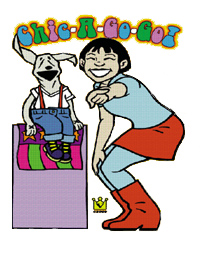
Shifting gears to Chic-a-go-go for a minute, what’s Ratso Huxtable Grebeck’s story?
Ratso started in the Punk’nhead comic in Roctober and I had an art school friend do a puppet when I started the cable access dance show. I originally wanted both Punk’nhead and Ratso, but that would have been a mistake because rats are great for telling jokes because of the whole eating garbage thing.
What is the most surreal or bizarre thing that has happened on Chic-a-go-go?
Maybe when Vanilla Ice freaked out over Ratso, claiming he was deathly afraid of puppets. It may be a white rapper problem, because later Lady Sovereign canceled the interview as soon as she saw the puppet and the Streets stopped the interview after 30 seconds, and was so rattled he canceled all his other interviews that day. Other journalists got mad at us and let us know we screwed them.
Has any performer or band ever crossed the line of appropriate kid-show behavior?
We had one noise band that came drunk and was kinda mean to the kids, and they got banned. We had one dancer show up naked covered with balloons and we sent him home. But those are two incidents out of over 700 episodes and fifteen years, so not too bad. Even super filthy guests know how to be great with kids. We’ve had Rudy Ray Moore on and Samwell, who is famous for an Internet anal sex song, and both were delights with youngsters.
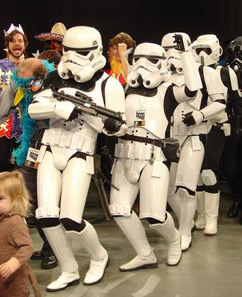
You are well on your way to becoming a Chicago cultural institution, are you allowed to induct yourself into the “Hall Of Dynamic Greatness” or are there rules against that sort of thing?
I would never qualify for that, but I was surprised on episode 500 or 600 when Miss Mia presented me with a ‘Chic-A-Go-Go Heritage Award,’ including a portrait of me by Derek Erdman who does all the portraits, so that was like me giving myself an award.
Are you still in touch with the rock group, The Goblins? Any news from those cats?
They are working in an Indian casino as a Goblins cover band.
Speaking of prolific rock acts, what is your favorite Woodrows record and why?
I like Buy-Curious, their concept album about about capitalism and gay pride.
Cool! That’s my favorite triple album after the Clash’s Sandanista and Mozart’s Magic Flute. Thanks, Jake!
Books written, co-written or edited by Jake Austen
Check out these books Jake had a hand in creating!
Darkest America Black Minstrelsy from Slavery to Hip-Hop
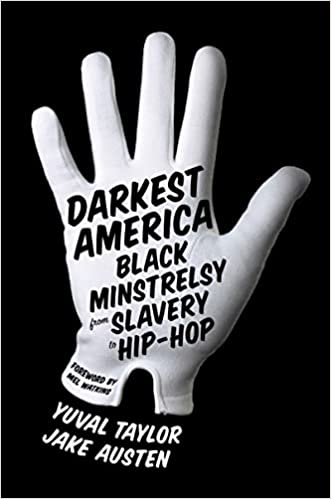
The performers who portrayed the grinning characters in blackface were part of a historical form of entertainment known as minstrelsy. While we now view minstrelsy as a regrettable and embarrassing relic, it is important to acknowledge its historical significance. In the past, both black and white audiences perceived it as an art form, albeit one that we now recognize as deeply problematic. Today, we can observe the continued influence of black minstrelsy in contemporary black entertainment through the works of artists such as Dave Chappelle, Flavor Flav, Spike Lee, and Lil Wayne. Darkest America delves into the origins, heyday, and contemporary expressions of this tradition, challenging the misconception that it was solely a form of entertainment forced upon black individuals by whites. This exploration sheds light on the complex nature of these performances, highlighting their potential to be both demeaning and, paradoxically, empowering.
Playground Growing Up in the New York Underground
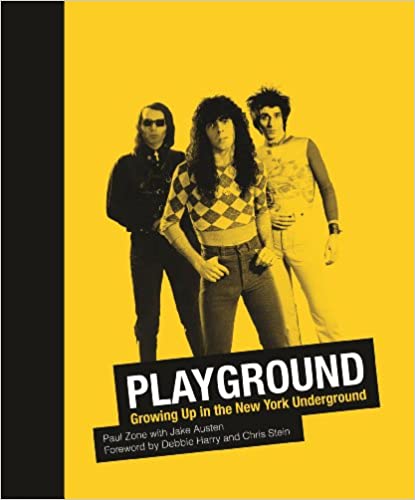
While many teenagers fantasized about summer break and played rock ‘n’ roll in their bedrooms, Paul Zone, a fourteen-year-old at the time, immersed himself in the vibrant underground club scene. Amidst rock stars, actors, drag queens, and individuals battling addiction, Zone danced his way through his youthful years. It was the mid-1970s, a time when glam rock’s demise collided with the emergence of punk rock, creating a unique blend of glitter and grunge.
Throughout this captivating photo memoir, Zone unveils personal images, never before seen by the public, accompanied by his memories of that era. As a young admirer who held these extraordinary figures in high esteem, Zone became a familiar presence in their lives. With a genuine sense of reverence, he captures the joys and fantasies of the New York underground scene, offering an intimate glimpse into a world inhabited by rock royalty. This volume stands as a heartfelt tribute to the legends who shaped the underground rock movement.
Flying Saucers Rock ‘n’ Roll Conversations with Unjustly Obscure Rock ‘n’ Soul Eccentrics
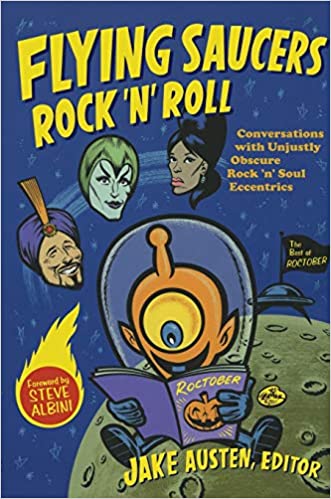
Flying Saucers Rock ‘n’ Roll brings together the most captivating interviews from Roctober Magazine. From the legendary rockabilly figure Billy Lee Riley and the jazz musician and activist Oscar Brown Jr. to the outlaw country sensation David Allan Coe and the pioneering rock ‘n’ roll group, the Treniers, these interviews offer profound insights into their extensive careers. Additionally, obscure musicians like the Armenian-language novelty artist Guy Chookoorian and the enigmatic interstellar glam act Zolar X share fascinating tales of their lives on the fringes of rock music. Flying Saucers Rock ‘n’ Roll presents over sixty images sourced from the pages of Roctober, alongside ten original illustrations created for the book by the esteemed underground rock ‘n’ roll artist, King Merinuk.
TV-a-Go-Go Rock on TV from American Bandstand to American Idol
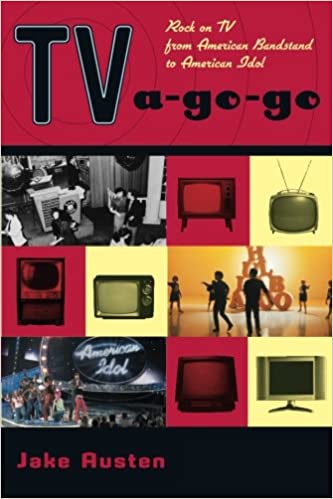
From Elvis and his matching tuxedo-clad hound dog to the humorous exploits of manufactured bands, from elaborate music videos to contrived reality show competitions, television has excelled at presenting the energy of rock in a fabulously entertaining yet inherently “fake” way. This examination delves into the intriguing dichotomy between “fake” and “real” music as portrayed on television, spanning generations of rock music. Every facet of the unique history and peculiar relationship between rock music and television is examined in detail.
Roctober Magazine Reviews
Read some reviews of Roctober published in Reglar Wiglar Magazine.
Roctober #48
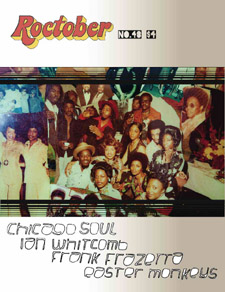
Roctober is another publication in the line of long-running Chicago zines. As action-packed as ever, Roctober hasn’t changed much in its almost twenty-year reign as the preeminent rag and resource for all things rock and roll. Issue number forty-eight, like its predecessors, is chock full of dynamic greatness and filled to the margins with rockness.
Roctober switched to a half-and-half zine format with the back half (or is it the front half?) featuring comics, including a twenty-page “Gumballhead the Cat” and the usual suspects “Punk’n’Head” and the slow-moving “Rockin’ Ace”. The front half (or is it the back half?) is where you’ll find interviews and assorted articles. This time around we get the goods on White Sox organist Nancy Faust; Chicago Soul singer, Hellen Wooten; the umpteenth but always entertaining Nardwuar/Snoop Dog hookup; an article on Cleveland legends, Easter Monkeys, and Larry Pig Gold chats with one-time Dee Dee Ramone wife, Vera Ramone King. But wait there’s more in the form of a shizzle load of record, CD, book, and comic reviews. All this for the incredibly low price of four friggin’ clams!!!!
Another action-packed issue of the rag-tag Roctober zine. Comics by John Porcellino, King Merinuk, and Rob Syer. Craploads of reviews and interviews. Jake interviews his long-time musical hero Glenn Danzig and tries his best not to annoy the Devil-Locked One. (Glenn’s publicist warns Jake in advance not to bring up the Misfits, or try to be funny and to exceed fifteen minutes. Does he comply with these wishes? Find out.)
Roctober #49
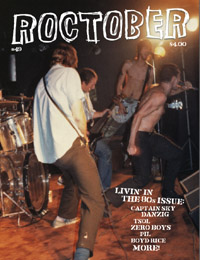
Jake also talks to Zero Boy’s Paul Mahern who walks Jake through each track of their blisteringly awesome 1982 record Vicious Circle. AND, if all that wasn’t enough, we get us some Nardwuar. Love me some Nardwaur. AND, if a dose of the Human Serviette isn’t enough, the interviewee is no less than the iconic John Lydon! Also included in #49 are articles, interviews, updates, and columns by the likes of Gentlemen John Battles and Larry Pig Gold. In summation, to quote former Governor Roddy B: “I got this thing and it’s effing golden”.
Roctober #50
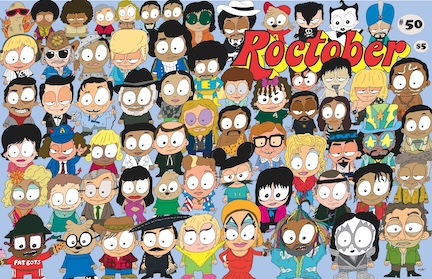
Twenty years and fifty issues of Roctober. Kinda hard to believe, but you can believe it because it’s true and I tell the truth and I’m telling it to you right now, so there. This anniversary issue revisits some of the artists that have been featured in the past and publisher, Jake Austen, steps out from behind the curtain to weigh in here and there on the content, thereby breaking a rule of his to never insert himself into the story. Roctober always did chuck the rules out the window, however, and this is certainly an occasion to do so. In addition to interviews and updates, there are, of course, several tons of the comics and reviews we’ve all come to expect from this crazy hodgepodge of a magazine. (Full disclosure: there’s even a Cassetty Comic or two). Here’s to another 25 years or Roctober!
